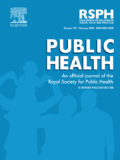Public Health, vol. 19(7), pp. 993-995. (2015)
Autores: R.M. Alfonso-Rosa, J. del Pozo-Cruz, B. del Pozo-Cruz, B. Sañudo y J.M. Abellán Perpiñán
Along with nutrition, exercise has long been recognized as a cornerstone for Type 2 Diabetes (T2DM) management in both primary and secondary prevention. Whole-body vibration (WBV) training, a relatively new exercise modality, has been previously tested in different clinical populations with promising results.
One of the strengths of this exercise modality is the reduced time and conscious process required to be applied. The research group has previously demonstrated that the addition of a short-term (i.e. 12-wk) WBV-based therapy in a primary care context is feasible, safe and effective to clinically reduce HbA1c and fasting blood glucose, and to improve cardiovascular risk factors in previously sedentary people with T2DM.1 Nonetheless, these programs must be considered under limited health system resources. Policy makers frequently select the treatment strategies based on their cost per quality of life-adjusted life-year (QALY), called cost-utility, representing the ratio of the QALYs gained divided by incremental cost of the new treatment compared to another (e.g. standard care). Cost-utility analysis allows health interventions, within and across health care programs, to be compared in terms of their cost and the number of QALYs they offer, thereby permitting finite health care resources to be allocated on a utilitarian ‘cost per QALY gained’ basis

